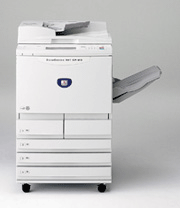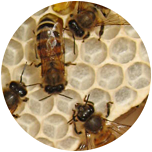This is one of my first posts, from TreeHugger. The original post can be seen here.
 Kudos to Canon and HP. A recent post highlighted the product stewardship programs that the two companies have launched for consumer products and printer cartridges, respectively. Fuji Xerox also deserves accolades for developing a product stewardship system. Ten years ago.
Kudos to Canon and HP. A recent post highlighted the product stewardship programs that the two companies have launched for consumer products and printer cartridges, respectively. Fuji Xerox also deserves accolades for developing a product stewardship system. Ten years ago.
In fact, Fuji Xerox has the most TreeHugger program I have ever heard of. It begins, if you can imagine, with design…Using ‘inverse manufacturing’, designers engineer components to maximize their potential. Then factories can dismantle old machines and, rather than melting them down to make new parts, just reassemble them in new machines.
Here’s how it works. If you have a little lever that is only used in one model of copy machine, it can be designed for a short life, made of cheap plastic, and recycled. But if you have a gear that is used in a copier, two different printers and a fax machine – find out more here, then you design the part to not wear out, to have a long life. The principle is simple. Spend the big bucks, build it to last, and re-use it several times.
If Canon and HP want to get serious about reducing waste, they should take a look at Fuji Xerox’s inverse manufacturing system.
I first heard about it in a forwarded email from Britain’s Resource Recovery Forum. Highlights from a more recent article on Via3.net are:
-More than just toner cartridges, Fuji Xerox is making entire machines with 70% reused parts. This eliminates 75% of the CO2 emissions associated with manufacturing.
-Parts are designed to last for multiple generations and be usable in other models, not just the model they were built for. In 2003, 60% of reused parts were being put into their third generation of use.
-In 2003, Fuji Xerox had a surplus of US$570 000, which means “the income from reusing components exceeds expenditures for the purpose of product recycling.” This makes very clear that a national parts reclamation and re-use system can be profitable.
-To complement the lower-impact copy systems, Fuji Xerox has started producing paper, using newspaper pulp and FSC certified wood from the companies’ own plantations.
-After Japan, the company built a collection and recycling plant in Thailand, and has plans for China. Let’s hope they bring inverse manufacturing West.
